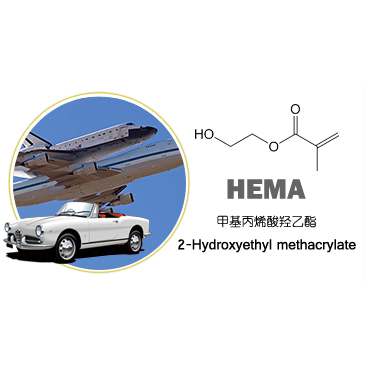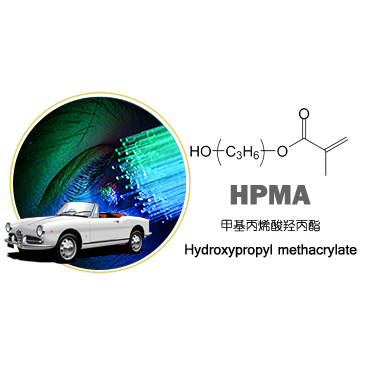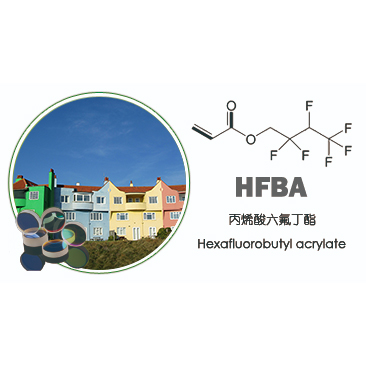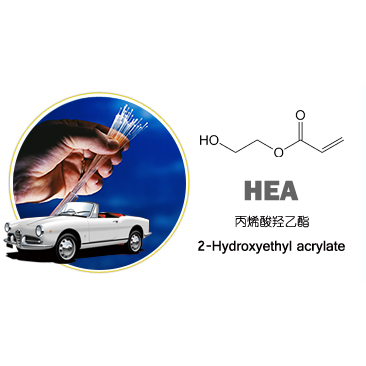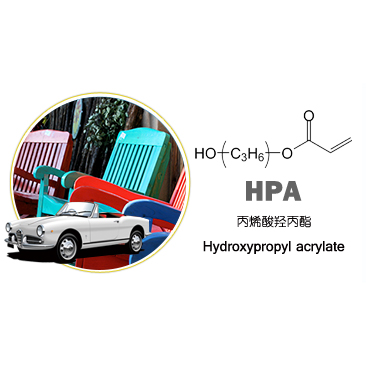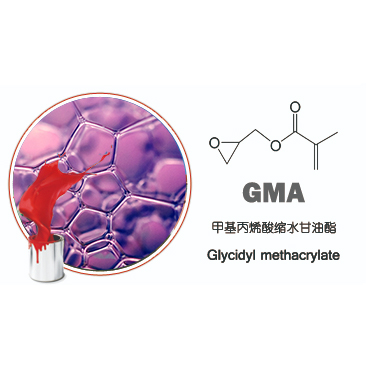- E-mail : info_marketing@jindunchemical.cn
- Phone : +86 21 64057580
- Address : Shanghai China
Preparation of aqueous dispersions of fluorinated hydroxyacrylic acid
High-solids solvent-based fluorinated acrylic acid resin was first prepared
from fluorinated acrylic acid monomer, butyl methacrylate (BMA), butyl acrylate
(BA) hydroxyethyl methacrylate (HEMA), and acrylic acid (AA) monomers, and then
the aqueous dispersion of fluorinated hydroxyacrylic acid was prepared by amine
neutralization and finally dispersion with water. The effects of relative
molecular mass, reaction temperature, neutralization degree, solvent amount,
acid value, and amount of fluorinated monomer (fluorine content) on the resin
preparation were discussed.
INTRODUCTION
Two-component acrylic-polyurethane coatings play an important role in
national production and have a wide range of applications. FEVE coatings are
widely used for the protection of outdoor steel structures, large marine bridges
and other equipment due to their excellent outdoor durability, but the VOC
content of the prepared coatings is high, which causes a large pollution to the
atmosphere during the construction of the film. Most of the water-based fluorine
resins on the market are fluorocarbon emulsions prepared by emulsion
polymerization technology, which have the disadvantage of low gloss and are
mainly used in the field of architectural coatings. Acrylic resins are widely
used because of their high gloss, good color retention, good alkali resistance
and low price. In this paper, we studied the copolymerization of fluoroacrylate
monomer in acrylic resin to produce fluoroacrylic resin aqueous dispersion,
which can maintain the characteristics of ordinary acrylic resin and have the
characteristics of fluorine resin such as weathering and staining resistance,
and the VOC content of the resin is much lower than that of solvent-based FEVE
resin, which can produce 2K-PU coating and one-component amino baking paint. The
application range is very wide.
1. Experimental part
1.1
Raw material
Monomer: (meth)trifluoroethyl acrylate, butyl methacrylate (MBA),
hydroxyethyl methacrylate (HEMA), butyl acrylate (BA), acrylic acid (AA):
industrial products, Jilin Petrochemical; initiator: tert-butyl peroxybenzoate
(TBPB), di-tert-butyl peroxide (DTBP): industrial products, neutralizer:
N,N-dimethylethanolamine (DMAE). Industrial, solvent: ethylene glycol butyl
ether (BCS), S-100# solvent: Industrial, curing agent: aqueous isocyanate
Bayhydur XP-2655: Industrial,.
1.2
Resin synthesis
Put the solvent into a four-mouth flask, raise the temperature to the
specified temperature, mix a part of trifluoroethyl (meth)acrylate, MBA, HEMA,
BA, AA, and initiator, and then add them into the four-mouth flask drop by drop
at a uniform rate for 3~4h; then add the remaining mixture of trifluoroethyl
(meth)acrylate, MBA, HEMA, BA, AA, and initiator drop by drop for 1~2h. After
the drops are finished, hold for 1 h, and then add one more part of initiator to
eliminate the residual list. After holding for 2 h, the temperature was lowered
to 90 ℃, and the neutralizer DMAE was added, and then deionized water was added
for dispersion to obtain the aqueous dispersion of fluorinated hydroxyacrylic
acid resin.
1.3
Performance testing and characterization
(1) Appearance: visual inspection.
(2) Relative molecular mass and its distribution: the relative relative
molecular mass of the aqueous dispersion was characterized by using GPC of
JINDUN CHEMICAL.
(3) Non-volatile component of aqueous dispersion: measured in accordance
with GB/T 1725-2007.
(4) Viscosity of water dispersion: measured in accordance with GB/T
2794-1995; NDJ-II rotational viscometer, using 3# rotor, 30 r/min.
(5) storage stability: 50 mL of the sample into 80 mL of transparent
plastic bottles, sealed into (50 ± 2) ℃ thermostatic oven, regular observation
of the sample appearance; (6) plate making conditions: the sample containing the
water dispersion viscosity: the sample is measured in accordance with GB/T
27/1995; NDJ-II rotary viscometer, using 3 # rotor, 30 r/min; (7) the sample is
measured in accordance with GB/T 27/1995.
(6) plate making conditions: fluorinated acrylic dispersion and water
dispersible isocyanate curing agent were mixed in proportion, sprayed on
tinplate, baked at 80 ℃ for 60 min after surface drying, and the dry film
thickness was about (30±5) μm.
2. Results and Discussion
2.1
Effect of relative molecular mass on dispersion
The size of the relative molecular mass of the resin directly affects the
performance of the final coating film. The smaller the relative molecular mass
of the acrylic resin, the higher the prepared solids, the lower the solvent
content, and the richer the appearance of the coating film. However, the smaller
the relative molecular mass of the hydroxy acrylic resin, the better it is.
After the relative molecular mass reaches a certain level, some of the resin
chains may not contain hydroxyl groups and cannot participate in cross-linking
and curing at a later stage, and exist in the form of plasticizer in the paint
film. This kind of small molecule resin will have the tendency to migrate to the
surface during the use of the paint film, causing the film to lose light and
deteriorate water resistance, which affects the performance of the paint film.
Similarly, to ensure that there are enough carboxyl groups in each resin chain
to provide later water dispersion, it is necessary to ensure that the resin has
a relatively suitable relative molecular mass. However, too large a relative
molecular mass can also cause problems such as large polymerization viscosity,
coarse particles in the dispersion process, poor water dispersion, and reduced
resin appearance and storage stability. Therefore, to ensure that the aqueous
dispersion has a good appearance and excellent coating performance, the relative
molecular mass of the resin and its distribution should be strictly controlled.
The influence of relative molecular mass on the appearance and viscosity of
aqueous dispersion is shown in
Note: The solids of resin is 45%, same as below.
It can be seen that as the relative molecular mass of the resin increases,
the viscosity of the dispersion tends to rise, while the appearance of the
dispersion changes from milky white to translucent blue phase and then gradually
becomes milky white. Because the relative molecular mass of resin is small to a
certain extent, the content of hydrophilic groups on part of resin chain is low,
which is not enough to provide resin water solubility (dispersibility), when
adding water for dispersion, the part of resin is suspended in the system as
water-insoluble particles, and the particles are coarse, and the appearance of
resin is milky white, so the viscosity of the system is very low. As the
relative molecular mass of the resin increases, the content of hydrophilic
groups on the resin chain increases and the resin has better hydrophilicity, the
appearance of the resin becomes slightly transparent with blue phase, the
particle size of the dispersion is smaller, and the viscosity gradually
increases. And with the further increase of relative molecular mass, although
the hydrophilic group on the molecular chain is increasing, at the same time the
length of hydrophobic chain segment increases more (the proportion of
hydrophobic components is large), which leads to the hydrophilic chain segment
is difficult to envelop the hydrophobic chain segment all inside the particle,
the adjacent hydrophobic chain segment molecules form aggregates due to hydrogen
bonding, the volume becomes larger, and the molecules become entangled and cause
the viscosity to increase. According to the experimental results, the relative
molecular mass of the resin is 3000~6000 g/mol, and the dispersion has a good
appearance.
2.2
Effect of reaction temperature on the dispersion
The effect of reaction temperature on the viscosity of the dispersion: the
viscosity of the resin gradually decreases as the reaction temperature
increases. The increase of reaction temperature means that the decomposition
rate of initiator is accelerated, and it also increases the termination rate of
chain growth radical and the rate of chain transfer, so the increase of reaction
temperature can reduce the relative molecular mass of resin, so that the
viscosity of resin can be reduced.
As can be seen, when the reaction temperature is at 160°C, the initiator
dosage decreases from 4% to 2%, and the appearance of the resin becomes slightly
translucent with blue phase again, so the dosage of initiator is reduced to
ensure that the relative molecular mass of the resin is within a reasonable
range, which can reduce the risk of deterioration of the resin weatherability
due to excessive dosage of initiator.
2.3
Influence of neutralization degree on dispersion viscosity
In order to realize the water solubility of resin, hydrophilic groups such
as hydroxyl (-OH) and carboxyl (-COOH) are usually introduced in polymer chains,
and the -COOH on polymer chains are neutralized by organic amines to make the
resin hydrophilic. The amount of organic amine has a great influence on the
viscosity of the resin
It can be seen that with the increase of the neutralization degree, the
resin viscosity shows a slow rise first, and then a sharp increase. This is
because with the increase of organic amine addition, the carboxyl groups on the
resin chain are neutralized more and more, and the number of hydrophilic chain
segments of the resin gradually increases, and the chain segments initially
encapsulated inside the dispersion particles gradually spread in the aqueous
phase and form aggregates, and the number of aggregates increases, and the
friction between them also increases, resulting in the system viscosity
gradually increases. From the viscosity results, the system neutralization
degree control at 70%-90% is more appropriate.
2.4
The effect of solvent content on the dispersion
The resin is made by solvent free radical polymerization, so the solvent
content plays a decisive role on the relative molecular mass and viscosity of
the resin. When the amount of solvent is low, the concentration of monomer is
too high during polymerization, which will cause the relative molecular mass to
increase, and the viscosity of the system becomes large at a later stage, which
will cause the automatic acceleration of free radical polymerization, resulting
in a surge of resin viscosity. Variation of dispersion viscosity with different
solvent amounts.
From the viscosity curve, we can see that when the solvent amount is
between 7% and 10%, the viscosity of the dispersion is low, and then the
viscosity rises with the increase of solvent amount; but when it exceeds 15%,
the viscosity shows a rapid decline. This is because, the solvent amount is less
than 7%, the concentration of monomer is higher in the synthesis process, and
the relative molecular mass of resin becomes larger causing the viscosity of the
system to become larger. After the solvent amount exceeds 10%, more and more
co-solvents help the resin to dissolve in water better, and the molecular chain
gradually spreads out, which makes the movement of the molecular chain difficult
due to the hydrogen bonding between molecules and increases the viscosity of the
resin. As the amount of solvent increases further, the amount of water becomes
less and less under the condition of maintaining certain solids, and the resin
dissolves into the solvent more and more, which makes the viscosity of the
system decrease rapidly because the solvent used is a good solvent with strong
solvency power.
2.5
The effect of carboxyl monomer addition on dispersion
The aqueous resin relies on the ammonium salting of hydrophilic monomer to
obtain hydrophilicity, so the amount of carboxyl group (-COOH) as hydrophilic
functional group plays a decisive role in the hydrophilicity of the resin. Too
little amount of carboxyl group will affect the stability of resin, while too
much amount of carboxyl group will cause the viscosity of the system to
increase, resulting in low construction solids, sagging, low film thickness and
other disadvantages, and most importantly, it will affect the water resistance
of resin. A variety of resins with carboxyl content were prepared for the test,
and their effects on resin performance are shown.
It can be seen that with the increase of carboxyl content, the viscosity of
resin rises rapidly, and when the carboxyl content reaches a certain degree, the
hydrophilicity of resin becomes better and better, and gradually becomes
water-soluble instead of water-dispersible. Through the experiment, we found
that the appearance and viscosity of dispersion are more suitable with the
addition of carboxyl monomer between 2.5% and 3.5%, and the storage stability is
also very good.
2.6
Effect of fluorine content on resin properties
The dispersions were prepared with trifluoroethyl acrylate monomer, which
is widely available and suitable in price, to ensure a high market
competitiveness in the subsequent promotion of the product. The different
fluorine content will have a large impact on the appearance and properties of
the dispersions. The fluorine content of trifluoroethyl acrylate monomer was
37%, and the dispersions with different fluorine contents were prepared
separately, and the properties of the resulting dispersions are shown.
It can be seen that with the increase of fluorine monomer, the appearance
of the resin gradually changed from milky white to semi-translucent blue phase,
and then to milky blue phase. This indicates that the particle size of the
dispersion changes from large to small and then gradually becomes larger, while
the storage stability also shows the same trend. This is due to the high water
and oil repellency of the fluorinated monomer. When a small amount of
fluorinated monomer copolymerization is used, a certain number of fluorocarbon
groups are arranged on the side chain of the resin, and the system becomes
"water-in-oil", the high water repellency of the fluorocarbon groups makes the
emulsion particles better "agglomerate" and get smaller particle size. This
results in a more transparent appearance of the dispersion. However, when the
amount of fluorinated monomers reaches a certain level, firstly, due to the
competitive polymerization rate of fluorinated monomers, the monomer conversion
rate decreases, and some fluorinated monomers remain in the system, causing the
dispersion to deteriorate in appearance and stability; secondly, the increasing
number of fluorinated carbon groups on the resin chain and their increasing
repulsion will greatly affect the hydrophobicity of hydrophilic groups on the
resin chain, resulting in a decrease in the hydrophilicity of the resin, an
increase in the particle size of the emulsion, a deterioration in appearance and
storage stability. The hydrophilicity of the resin decreases, the particle size
of the emulsion increases, the appearance deteriorates and the storage stability
decreases. From the consideration of technical index and cost factors, it is
more appropriate to control the fluorine content at 8%~13%.
2.7
Basic performance test of coating film
Waterborne two-component acrylic polyurethane coating film was prepared by
using waterborne isocyanate curing agent and fluorinated acrylic dispersion. The
reference formula is shown.
The varnish was prepared according to the above formula, and the
performance was tested after complete drying as required. The results are
shown.
From the data, it can be concluded that the fluorinated acrylic dispersion
has a higher gloss than conventional FEVE coatings and can be better used in
areas where weathering and decorative properties are required.
3.Conclusion
In this study, the influence of multiple factors on the preparation and
stability of fluorinated acrylic dispersions has been investigated, and the
parameters that enable the preparation of stable fluorinated acrylic dispersions
have been determined, which are of some guidance for such resins. The
fluorinated acrylic dispersions prepared in this study have excellent properties
such as gloss, appearance, weathering resistance, etc., which are of good
practical significance.
-
date
2022-10-10
-
location
Shanghai, China







































